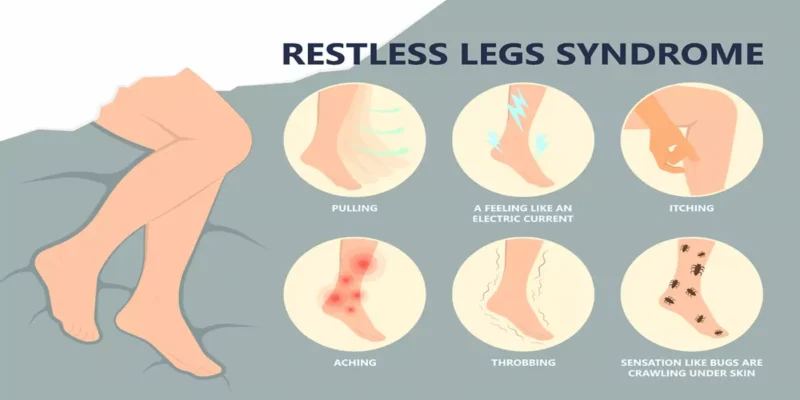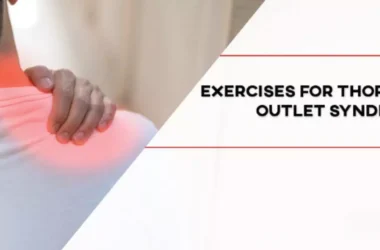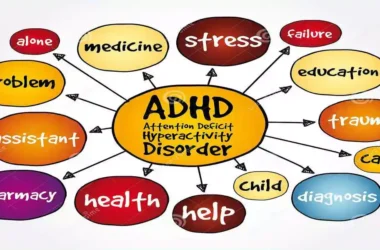[ez-toc]
Introduction
Restless Leg Syndrome (RLS) can be a frustrating and disruptive condition that interferes with peaceful sleep and overall well-being.
Finding relief from the discomfort and sleep disturbances caused by RLS is essential for maintaining a good quality of life.
In this comprehensive guide, we will delve into various exercises and strategies to help you ease the discomfort of restless leg syndrome and improve your sleep patterns.
From simple stretches to mindful movements, these exercises can offer both short-term relief and long-term benefits.
Exercises for Restless Leg Syndrome: Easing Discomfort and Promoting Sleep
Stretch Away the Sensations
Stretching is a fundamental technique that can provide quick relief from restless leg sensations. Gentle, targeted stretches can help alleviate muscle tension and reduce the urge to move your legs. Try the following stretches to soothe your restless legs:
- Hamstring Stretch: Lie on your back and gently pull one leg towards your chest, keeping the other leg extended. Hold for 20-30 seconds and switch sides.
- Quadriceps Stretch: Stand near a wall for balance, grab your ankle, and gently pull your foot towards your glutes. Hold for 20-30 seconds on each leg.
- Calf Stretch: Stand facing a wall, place one foot forward, and lean against the wall. Keep your back leg straight and your heel on the ground to feel the stretch in your calf muscles.
- Yoga Child’s Pose: Kneel on the floor, sit back on your heels, and extend your arms forward. This gentle stretch can provide relief to your lower back and legs.
Engage in Mindful Movement
Mind-body practices can play a significant role in managing RLS symptoms. Activities that combine gentle movements with focused breathing can help relax the body and mind. Consider these options:
- Tai Chi: This ancient Chinese practice involves slow, flowing movements that can promote relaxation and balance. Tai Chi has been shown to improve sleep quality and reduce RLS symptoms.
- Yoga: Certain yoga poses and sequences can target the muscles affected by restless leg syndrome. The combination of movement and controlled breathing can create a calming effect on the nervous system.
- Pilates: Pilates emphasizes core strength and controlled movements. Engaging in Pilates exercises can enhance muscle support and alignment, potentially reducing RLS discomfort.
Maintain a Consistent Exercise Routine
Regular physical activity can contribute to better sleep and overall health. Aim for at least 30 minutes of moderate exercise on most days of the week. Activities such as walking, swimming, or cycling can improve circulation and promote relaxation.
Also Read: Exercise for Post-Traumatic Stress Disorder (PTSD) Recovery: Healing the Mind and Body
Make Lifestyle Modifications
In addition to exercises, certain lifestyle changes can further alleviate RLS symptoms and promote better sleep:
- Dietary Adjustments: Consider reducing caffeine and alcohol intake, especially in the evening. These substances can exacerbate RLS symptoms and disrupt sleep.
- Warm Baths: Soaking in a warm bath before bedtime can relax your muscles and prepare your body for restful sleep.
- Massage and Self-Care: Gentle massage, particularly of the legs, can help ease discomfort and improve blood flow. Practicing relaxation techniques, such as deep breathing and meditation, can also contribute to better sleep.
Frequently Asked Questions (FAQs)
Q: Can RLS be completely cured through exercises?
A: While exercises can significantly alleviate RLS symptoms, a complete cure may not always be guaranteed. However, adopting a regular exercise routine can lead to substantial improvements in comfort and sleep quality.
Q: Are there any specific foods that can worsen RLS?
A: Yes, foods high in caffeine and alcohol can potentially exacerbate RLS symptoms. It’s advisable to limit the consumption of these substances, particularly in the evening.
Q: Can yoga help with RLS?
A: Yes, certain yoga poses and stretches can target the muscles affected by RLS and provide relief from discomfort. Incorporating yoga into your routine may contribute to better sleep.
Q: How soon can I expect to see improvements with these exercises?
A: Results may vary from person to person. Some individuals may experience relief shortly after starting these exercises, while others may notice improvements over time with consistent practice.
Q: Is medication necessary for managing RLS?
A: Medication can be prescribed for severe cases of RLS. However, exercises, lifestyle modifications, and holistic approaches should be explored as initial strategies before considering medication.
Q: Can RLS affect children and teenagers?
A: Yes, although it’s more common in adults, RLS can also affect children and teenagers. Implementing healthy lifestyle habits and exercises can benefit individuals of all ages.
Conclusion
Incorporating exercises into your daily routine and making mindful lifestyle adjustments can significantly ease the discomfort caused by restless leg syndrome and contribute to better sleep quality.
Remember that consistency is key, and finding a combination of exercises and strategies that work for you may take some time.
By prioritizing your well-being and implementing these practical approaches, you can reclaim restful sleep and enhance your overall quality of life.






